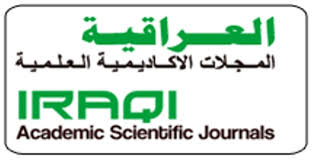The literal structure of sacred letters in contemporary Iraqi painting
DOI:
https://doi.org/10.59767/2023.11/27.9Keywords:
literal, structure, sacred, acting performance, letters, contemporary, paintingAbstract
This research is concerned with the study of (the lettering structure of the sacred letters in the contemporary Arabic formation), which worked on studying the structure of the Arabic letter within the limits of the sacred speech, and the great role that the speech played when it was embodied within the artistic works, whether it was drawing, sculpture or ceramics. The first is the preservation of Islamic heritage and arts, which were distinguished by the most important element in them, which is the Arabic letter and calligraphy, which gained their sanctity from the Noble Qur’an and the noble prophetic sayings. The researcher reached a number of results, including: 1- The contemporary literal structure of artistic discourses, with their different types and their preoccupations in Arabic formation, revealed divine connotations that are liberated from their rules. 2- Representing the literal structures in their abstract forms through dealing with the details, disposing of the mass, and manipulating the texture to broadcast a sacred discourse represented by simulating the essence, and by activating the technical feature within the formation of contemporary discourse and its data, which is a procedure to introduce sacred connotations to convey the meaning and undermine the similarity and simplify it with plastic and semantic dimensions.
References
- Abdel Jalil, R. (2021), Aesthetic Criteria for the Concept of the Sacred in Postmodern Arts, research article, Faculty of Art Education, Helwan University, Volume 21, Number 2.
- Abdul-Mawla, W. (2015), Crossroads of Visual Arts, Sultan Qaboos University.
- Adonis, A. (2006). Sufism and Surrealism, Dar Al-Saqi, third edition, Beirut – Lebanon .
- Akasha, T. (2011), History of Ancient Iraqi Art, Sumer, Babylon and Assyria, Fourth edition, Arab Institute for Studies and Publishing, Beirut – Lebanon .
- Al-Haidari, I. (2020), Hermeneutics of the Holy Text, University of Baghdad, College of Arts, research published in Lark Journal of Philosophy, Linguistics and Social Sciences, Issue 37 .
- Al-Jubouri M, (1991). Calligraphy and Islamic Decoration, Dar Al-Amal for Publishing and Distribution, Jordan .
- Al-Naseer, Y. (2018), Modernity and Formation, Anthology, online article, https://alantologia.com/ .
- Arafat, S. (2011), Islamic Art, 1st Edition, Dar Al-Aasar Al-Alami for Publishing and Distribution, Ammaan Jordan.
- Georgy, G. (1990), Consciousness and Art, Transulation. Nawfal Nayouf, Kuwait.
- Hibbi, Y. (1980), Human in the Literature of Mesopotamia, 1st edition, Baghdad – Iraq, https://www.hindawi.org/
- Hussein, T. (2014), Postmodern Arts and Their Representations in Contemporary Iraqi Art, PhD thesis, College of Fine Arts, Babylon – Iraq .
- Huyghe, R. (1978), Translation, Salah Barmada, Part Two, Publications of the Ministry of Culture and National Guidance, Damascus - Syria.
- Ibrahim A, (1993), The Problematic of the Critical Term: Discourse and Text, Arab Horizons Magazine, Baghdad – Iraq .
- Shaheen, M. (2012), Arabic calligraphy, concerns and problems, publications of the Syrian General Book Authority, Ministry of Culture, Damascus - Syria.
- Siege of Time: The Present (Problems) Part One, discourse analysis, electronic essay, Hindawi,
- Zahi, N. (2021), Arabic calligraphy and Madiha Omar’s website, Al-Malahel newspaper, Issue 458, https://almadasupplements.com/
- Jaida, A, (1986), Arts of Writing Crafts, Dar Al-Jeel , Beirut - Lebanon .
- Qalala, N. (2021), Arabic calligraphy in Islamic civilization, https://islamonline.net/ .
- Jenzy, H. T. (2020). Body Transformations in Drawings the Artist Muhammed Mehraddin. Al-Academy(95), pp. 143–160. doi:doi.org/10.35560/jcofarts95/143-160
- Kareem, N. S., & Aldaghlawy, H. J. (2022). Pictures of death in the Iraqi theatrical performance. Basrah Arts Journal(22), pp. 187-206. doi:https://doi.org/10.59767/bfj.5300.1976
Downloads
Published
How to Cite
License
Copyright (c) 2023 Hayder Salih Abdullah, Dr. Ban Mohammad Ali (Author)

This work is licensed under a Creative Commons Attribution 4.0 International License.







